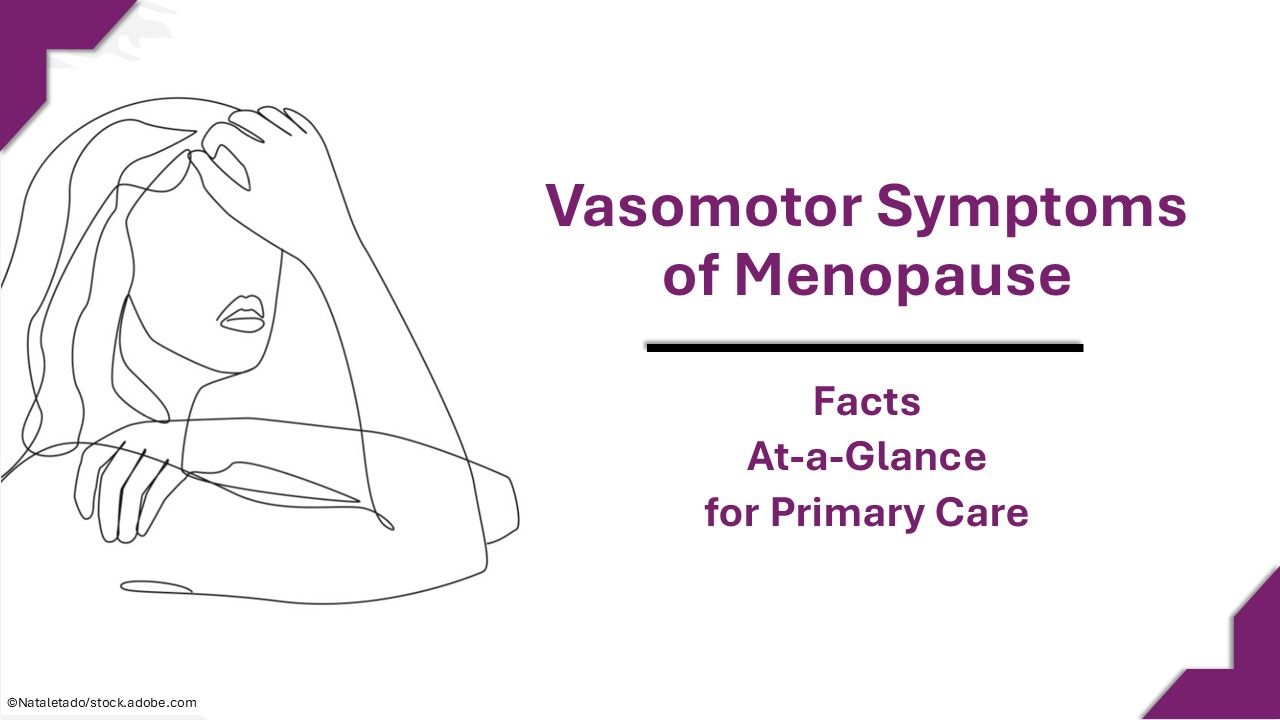Vasomotor Symptoms of Menopause: Facts At-a-Glance for Primary Care
Hot flashes and night sweats are just 2 of the myriad symptoms associated with menopause. Click through a quick refresher on the transition and effective treatments.
Vasomotor symptoms (VMS), including hot flashes and night sweats, are the most common and distressing symptoms associated with the menopausal transition. They affect approximately 60% to 80% of women during perimenopause and the endocrinologic change may persist for a decade or longer in some individuals. These symptoms are not only uncomfortable but also linked to significant health and psychosocial consequences. Beyond their immediate discomfort, VMS are associated with sleep disturbance, increased risk of depressive symptoms, heightened cardiovascular risk, and while still being investigated, perceived cognitive decline in midlife.
The short slide show above is by no means comprehensive but rather meant as an at-a-glance reminder of the characteristics of the transition and some of the clinical approaches to reducing symptoms.
Check out all the Patient Care ACOG 2025 coverage.
Sources
Rapkin AJ. Vasomotor symptoms of menopause: physiologic condition and central nervous system approaches to treatment. AJOG. 2007;196(2):97-106. https://www.ajog.org/article/S0002-9378(06)02476-8/fulltext
Crandall CJ, Mehta JM, Manson JE. Management of menopausal symptoms: a review. JAMA. 2023;329(5):405-420. doi:10.1001/jama.2022.24140
The American College of Obstetricians and Gynecologists. Management of menopausal symptoms. Practice Bulletin 141. January 2014. https://www.acog.org/clinical/clinical-guidance/practice-bulletin/articles/2014/01/management-of-menopausal-symptoms
The North American Menopause Society. The 2022 hormone therapy position statement of The North American Menopause Society. Menopause. 2022;29(7):767–794. doi:10.1097/GME.0000000000002028
Magraith K, Jang C. Management of menopause. Aust Prescr. 2023;46(3):48–53. doi: 10.18773/austprescr.2023.014













